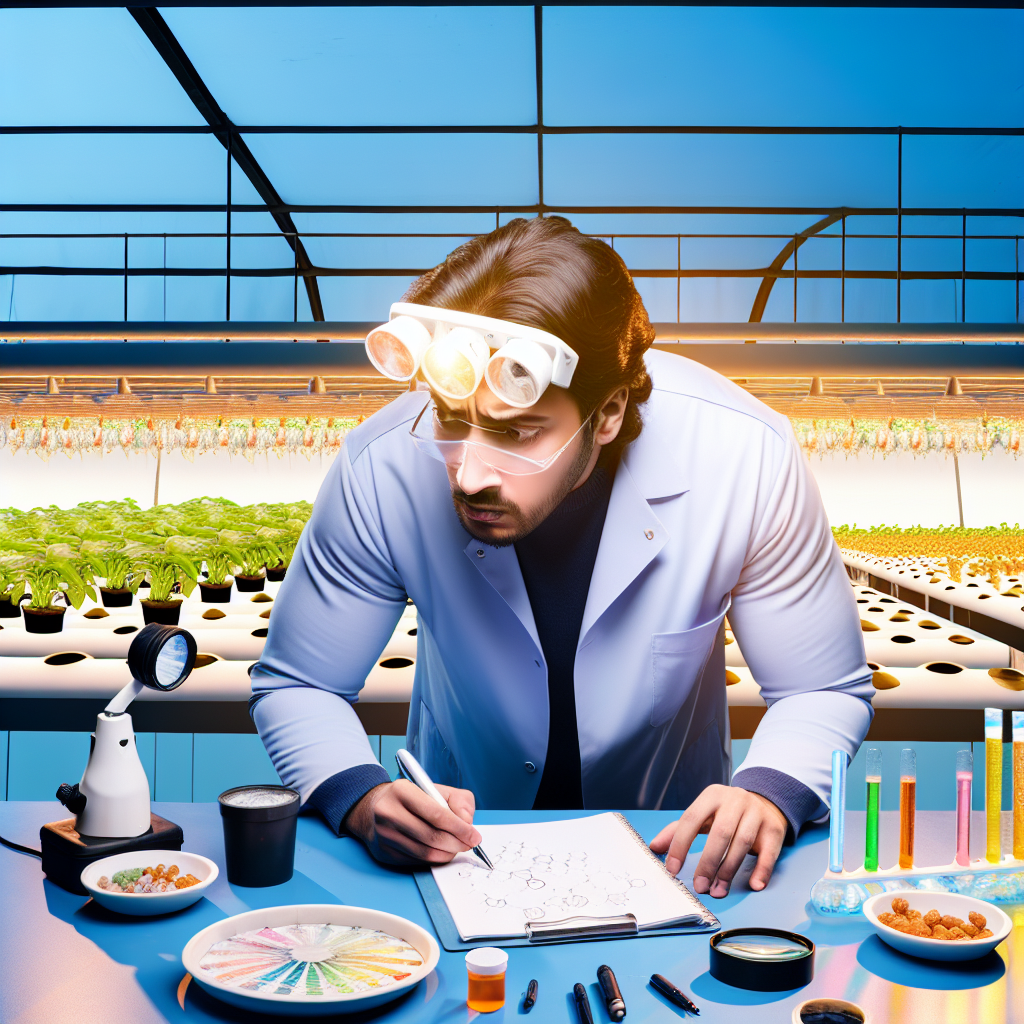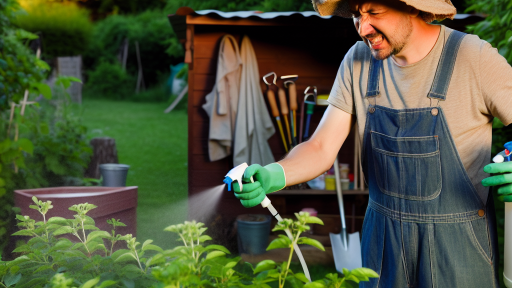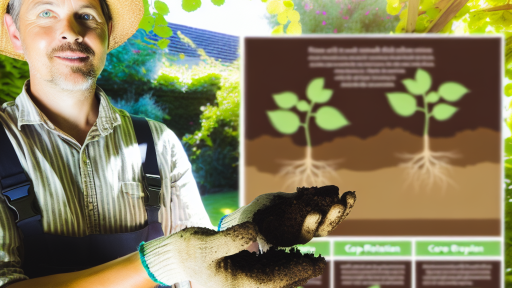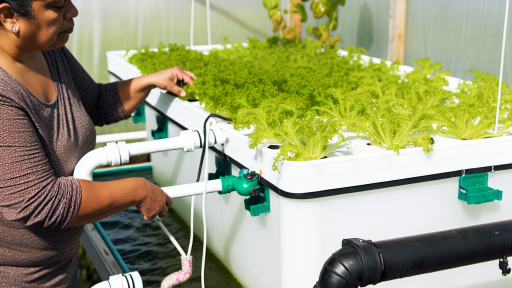Introduction to Hydroponic Systems
Hydroponic systems represent a revolutionary method of growing plants without soil.
These systems use nutrient-rich water to deliver essential elements directly to plant roots.
Due to this innovative approach, plants grow faster and yield more.
Moreover, hydroponics can operate in diverse environments, including urban areas.
This method requires less water than traditional soil-based farming, making it eco-friendly.
Basics of Hydroponic Systems
Hydroponics utilizes various methods to support plant growth effectively.
Common systems include nutrient film technique, deep water culture, and aeroponics.
Each system has unique advantages, catering to different types of plants and growing conditions.
For instance, aeroponics uses mist to nourish plants, promoting rapid growth.
Benefits of Hydroponic Cultivation
Hydroponics offers multiple benefits that appeal to both hobbyists and commercial growers.
First, this method allows for year-round crop production, independent of seasonal changes.
Additionally, it minimizes the risk of pests and diseases associated with soil.
Furthermore, hydroponic systems maximize space, making them ideal for urban farming.
Finally, these systems promote optimal growing conditions, leading to healthier plants.
Identifying Common Hydroponic Problems
Understanding Nutrient Deficiencies
Nutrient deficiencies occur when plants lack essential elements.
Transform Your Agribusiness
Unlock your farm's potential with expert advice tailored to your needs. Get actionable steps that drive real results.
Get StartedCommon signs include yellowing leaves and stunted growth.
Observe leaf symptoms to identify specific nutrient needs.
For instance, nitrogen deficiency causes older leaves to yellow.
Phosphorus deficiency leads to dark green or purplish leaves.
Recognizing Pests and Diseases
Pests can significantly harm hydroponic plants.
Look for visible insects or webbing on plants.
Diseases often manifest as spots, mold, or wilting.
Regularly inspect plants to catch issues early.
Introduce natural predators to control pest populations.
Addressing pH Imbalance
pH levels impact nutrient availability in hydroponic systems.
Check pH regularly using a reliable pH meter.
A pH below 5.5 or above 6.5 can hinder nutrient absorption.
Adjust pH levels using pH up or pH down solutions.
Maintain stable pH to support healthy growth.
Identifying Light Issues
Insufficient light causes weak, leggy plants.
Excessive light can lead to leaf burn and stress.
Choose the right spectrum of light for plant growth.
Adjust light intensity and duration based on plant needs.
Experiment with different lighting setups for optimal results.
Evaluating Water Quality
Water quality plays a crucial role in hydroponics.
Check for contaminants and impurities in your water supply.
High levels of chlorine or heavy metals can damage plants.
Use filtered water or rainwater for the best results.
Regularly monitor water temperature and dissolved oxygen levels.
Showcase Your Farming Business
Publish your professional farming services profile on our blog for a one-time fee of $200 and reach a dedicated audience of farmers and agribusiness owners.
Publish Your ProfileNutrient Deficiency: Signs, Symptoms, and Solutions
Understanding Nutrient Deficiency
Nutrient deficiency occurs when plants lack essential nutrients.
These deficiencies can hinder growth and reduce yields.
Identifying the signs early is crucial for recovery.
Signs of Common Nutrient Deficiencies
Different nutrients manifest their deficiencies in unique ways.
Yellowing leaves often indicate nitrogen deficiency.
Additionally, cupped or curling leaves can signal a potassium shortage.
Magnesium deficiency can cause interveinal chlorosis, a yellowing between leaf veins.
Moreover, iron deficiency typically leads to yellowing between the veins in young leaves.
Symptoms Associated with Nutrient Deficiencies
Symptoms vary significantly depending on the nutrient in question.
- Nitrogen deficiency results in stunted growth and pale foliage.
- Potassium deficiency often causes scorched leaf edges.
- Magnesium deficiency can lead to leaf curling and poor fruit development.
- Iron deficiency generally affects younger leaves first, causing yellowing.
Solutions to Nutrient Deficiencies
Addressing nutrient deficiencies quickly promotes plant health.
Testing the nutrient solution is essential for identification.
Use a reputable nutrient testing kit to assess levels accurately.
Adjusting Nutrient Levels
Once identified, adjust the nutrient solution accordingly.
For nitrogen deficiency, increase nitrogen-rich fertilizers.
In cases of potassium deficiency, add potassium supplements.
Adding magnesium can help rectify magnesium deficiency effectively.
Finally, for iron deficiency, consider chelated iron options.
Preventive Measures
Regular monitoring helps to prevent nutrient deficiencies.
Establish a consistent fertilization schedule tailored to plant needs.
Ensure your hydroponic system maintains optimal pH levels as well.
Furthermore, using high-quality nutrient solutions can minimize deficiencies.
Gain More Insights: How To Save Seeds For Sustainable Farming
pH Imbalance: How to Detect and Correct Issues
Understanding pH in Hydroponics
pH measures the acidity or alkalinity of your nutrient solution.
It affects nutrient availability for your plants.
Most hydroponic crops thrive at a pH of 5.5 to 6.5.
Detecting pH Imbalance
Monitor pH levels regularly with a pH meter.
Check your readings at least once a week, if not daily.
Watch for signs of nutrient deficiency in your plants.
These may include yellowing leaves or stunted growth.
Causes of pH Imbalance
Several factors contribute to pH fluctuation.
- Nutrient concentration can shift pH levels.
- Water quality impacts the overall pH.
- Environmental conditions play a critical role.
Correcting pH Imbalance
Adjust pH using pH-up or pH-down solutions.
Follow the manufacturer’s instructions carefully.
Make small adjustments to avoid shocking your plants.
After adjustments, retest the pH after several hours.
Maintaining Optimal pH Levels
Implement a regular testing routine to maintain balance.
Consider automating your pH control system.
Ensure proper nutrient mixing to support stability.
Regularly clean your nutrient reservoir to prevent buildup.
Discover More: Pest Management in Edible Landscaping
Water Quality: Importance and Steps for Improvement
Understanding Water Quality
Water quality significantly impacts hydroponic systems.
Showcase Your Farming Business
Publish your professional farming services profile on our blog for a one-time fee of $200 and reach a dedicated audience of farmers and agribusiness owners.
Publish Your ProfileIt influences plant health, growth rates, and yields.
Optimal water conditions promote nutrient absorption.
Therefore, maintaining quality is crucial for success.
Key Water Quality Parameters
Several parameters determine water quality in hydroponics.
These include pH, electrical conductivity, and dissolved oxygen levels.
Regular testing is essential for monitoring these qualities.
pH Levels
pH indicates the acidity or alkalinity of the water.
Most plants thrive in a pH range of 5.5 to 6.5.
Use pH meters for accurate measurement.
Electrical Conductivity
Electrical conductivity measures nutrient concentration in water.
Higher values indicate more nutrients are present.
Regular checks help avoid nutrient imbalances.
Dissolved Oxygen
Dissolved oxygen is vital for root respiration.
Roots require oxygen to take up nutrients effectively.
Maintain adequate oxygen levels by using air pumps.
Identifying Water Issues
Recognizing water quality issues is vital for troubleshooting.
Plants show signs when water quality declines.
These signs include yellowing leaves and stunted growth.
Also, look for root rot as a sign of low oxygen.
Steps to Improve Water Quality
Implementing good practices can improve water quality effectively.
- Regularly test water parameters using accurate tools.
- Regularly change nutrient solutions to prevent buildup.
- Clean the reservoir and equipment periodically.
- Add beneficial microbes to enhance nutrient uptake.
Following these steps can create a healthier growing environment.
Ensuring a Thriving Hydroponic System
By maintaining proper water quality, you ensure thriving plants.
Monitor conditions regularly, and make adjustments as needed.
Healthy plants lead to a successful hydroponic yield.
Find Out More: Overcoming Common Challenges In Container Gardening
Pest and Disease Management in Hydroponics: Prevention and Treatment
Understanding Common Pests
Hydroponics can attract various pests, including aphids and spider mites.
These pests can severely damage plants if not managed promptly.
Identifying pests early is crucial for effective control.
Effective Prevention Strategies
Maintaining a clean growing environment helps prevent infestations.
Regularly inspect plants for signs of pests or diseases.
Furthermore, using physical barriers can keep pests at bay.
- Install insect nets to protect crops.
- Utilize sticky traps to monitor pest activity.
- Ensure proper ventilation to reduce humidity levels.
Natural Pest Control Methods
Beneficial insects can help control pest populations naturally.
Ladybugs and lacewings are effective against aphids.
Additionally, introducing predatory mites can manage spider mite populations.
Chemical Control Options
In some cases, chemical treatments may be necessary for severe infestations.
Choose pesticides that are safe for hydroponic systems.
Always follow the manufacturer’s instructions for application.
Identifying Plant Diseases
Diseases like root rot and powdery mildew can threaten hydroponic crops.
Recognizing symptoms early can prevent disease spread.
- Watch for yellowing leaves as a sign of nutrient deficiency or disease.
- Check for wilting plants, which may indicate root problems.
Preventing Diseases in Hydroponics
Ensure proper water management to prevent root rot.
Showcase Your Farming Business
Publish your professional farming services profile on our blog for a one-time fee of $200 and reach a dedicated audience of farmers and agribusiness owners.
Publish Your ProfileAvoid overwatering and ensure good drainage in your system.
Regularly sterilize tools and growing media to reduce contamination risks.
Treatment Options for Common Diseases
Use fungicides to treat fungal infections like powdery mildew.
For root rot, consider switching to an aerated grow medium.
Removing affected plants can also help minimize disease spread.
See Related Content: Sustainable Urban Farming Methods Explained

Climate Control: Managing Temperature and Humidity Levels
Importance of Temperature Control
Temperature plays a critical role in hydroponic systems.
It directly affects plant growth and development.
Maintaining optimal temperatures ensures healthy yields.
Specifically, different plants have varying temperature needs.
Therefore, understanding these requirements is essential.
Recommended Temperature Ranges
Most leafy greens thrive between 65°F and 75°F.
Fruiting plants, such as tomatoes, prefer warmer conditions.
For these, aim for a range of 70°F to 80°F.
Additionally, monitor nighttime temperatures as well.
These should not drop excessively to avoid stress.
Humidity Levels and Their Effects
Humidity also significantly impacts plant health.
High humidity levels can lead to mold and mildew.
Conversely, low humidity can cause wilting.
Therefore, strive for balanced humidity levels.
This typically falls between 40% and 70% for hydroponics.
Tools for Climate Management
Use thermometers to regularly check temperature levels.
Additionally, hygrometers measure humidity accurately.
Consider installing a climate control system for automation.
Such systems can adjust conditions without manual effort.
Furthermore, utilize fans for air circulation and cooling.
Common Temperature-Related Issues
Fluctuating temperatures can stress plants.
Signs of stress include yellowing leaves or stunted growth.
Additionally, extreme heat can cause flower drop.
Regularly troubleshoot and adjust based on observations.
Always ensure plants have the right environment.
System Failures: Troubleshooting Equipment and Operational Issues
Identifying System Failures
Your hydroponic system may experience failures at any time.
Identify symptoms and correlate them with potential issues.
Poor plant growth often indicates underlying problems.
Consider environmental factors as possible contributors.
Water quality issues can affect nutrient availability.
Common Equipment Failures
Power outages disrupt the entire hydroponic system.
Check for tripped breakers or faulty wiring.
Keep backup power sources readily available.
Also, pump failures can severely impact water flow.
Showcase Your Farming Business
Publish your professional farming services profile on our blog for a one-time fee of $200 and reach a dedicated audience of farmers and agribusiness owners.
Publish Your ProfileListen for unusual noises indicating pump malfunctions.
Regularly inspect and maintain pumps to prevent issues.
Operational Issues and Their Solutions
Temperature fluctuations can stress your plants.
Monitor ambient temperatures and adjust settings accordingly.
Additionally, light failures can hinder photosynthesis.
Inspect timers and bulbs regularly for optimal performance.
Incorrect pH levels can lead to nutrient lockout.
Use pH meters to ensure proper balance in your nutrient solution.
Regular Maintenance Practices
Establish a regular maintenance schedule for your equipment.
Check all connections and replace worn parts as needed.
Perform routine inspections to catch problems early.
Document any maintenance performed for future reference.
Keeping detailed logs can help identify trends over time.
Finding Professional Help
When troubleshooting becomes overwhelming, seek help.
Hire professionals with experience in hydroponic systems.
Consider joining local gardening groups for guidance.
Online forums can also provide valuable troubleshooting tips.
Connect with experienced growers for shared insights.
Troubleshooting Common Hydroponic Issues
Common Problems in Hydroponic Systems
Hydroponic systems can face various challenges.
Identifying these issues early helps mitigate damage.
- Poor plant growth
- Nutrient deficiencies
- Water quality problems
- Pest infestations
- System failures
Diagnosing Plant Growth Issues
Poor growth can stem from various causes.
First, check the nutrient solution’s pH level.
Next, assess the light conditions in your setup.
Finally, evaluate the humidity levels around the plants.
Addressing Nutrient Deficiencies
Nutrient deficiencies can significantly impact growth.
Examine the nutrient solution regularly.
Ensure it contains adequate macronutrients and micronutrients.
Additionally, adjust the concentration as needed.
Improving Water Quality
Water quality is crucial for successful hydroponics.
Monitor the electrical conductivity (EC) levels frequently.
Ensure that you change the nutrient solution regularly.
Moreover, use filtered or distilled water when possible.
Identifying Pest Infestations
Pest issues can quickly escalate in hydroponic environments.
Inspect your plants regularly for signs of pests.
Use organic pest control methods when necessary.
Introduce beneficial insects to combat common pests.
Troubleshooting System Failures
System failures can cause significant stress to plants.
Check all pumps and timers to ensure proper function.
Regular maintenance keeps the system operating smoothly.
Lastly, have a backup plan in case of power outages.
Showcase Your Farming Business
Publish your professional farming services profile on our blog for a one-time fee of $200 and reach a dedicated audience of farmers and agribusiness owners.
Publish Your ProfileMaintaining a Healthy Hydroponic System
Regular monitoring ensures optimal plant health.
Establish a consistent schedule for nutrient adjustments.
Maintain clean equipment to prevent contamination.
Train yourself on plant care and system upkeep.
Incorporating these practices leads to thriving plants.
Additional Resources
Urban Farms/Gardens – Urban Gardening – ECHOcommunity …
Micro Farming: Growing Wheat in Your Backyard : 4 Steps (with …




